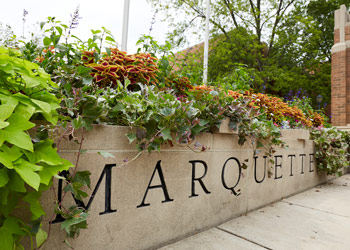- Checklist of Important Dates
- Contact Us
- List of Service Learning Courses
- MUEngage
- In-Class Orientation Presentation
- Service Learner Step-by-Step Checklist
- Reflection Sessions
- Current Student Coordinator Job Openings
- FAQs for Students
- Current Volunteer Form
- Independent Placement Form
- Independent Placement Timesheet
PROBLEM WITH THIS WEBPAGE?
Report an accessibility problem
To report another problem, please contact kimberly.jensen@marquette.edu
